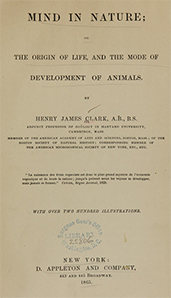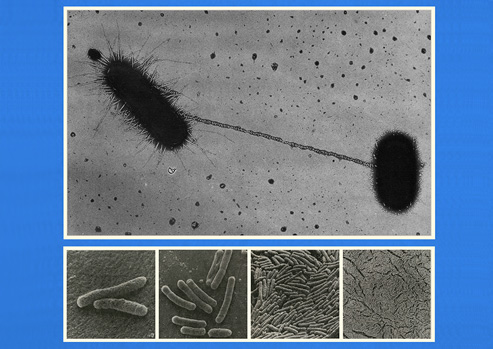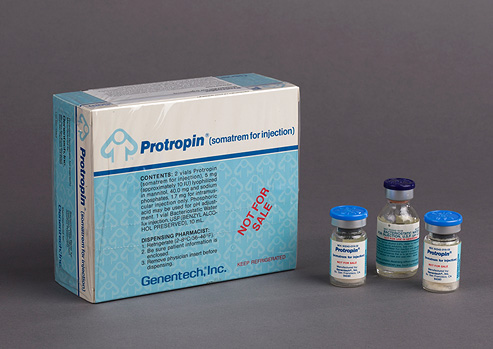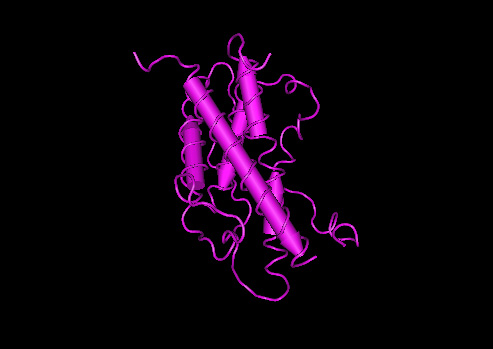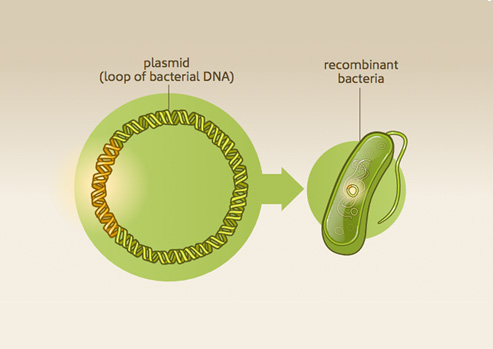-
Top: E.coli bacteria exchanging genes
Courtesy of Charles C. Brinton Jr.
Bottom: Views of E.coli bacteria by scanning electron microscope
Courtesy of David Scharf Photography
Escherichia coli (E. coli ) bacteria are the workhorses of recombinant DNA technology. The ability of bacteria to easily exchange and absorb new pieces of DNA made them good vehicles for genetic engineering techniques.
-
Protropin, human growth hormone, 1987
Courtesy National Museum of American History
The Food and Drug Administration approved Protropin, human growth hormone made using genetically modified bacteria, for therapeutic use in 1985.
-
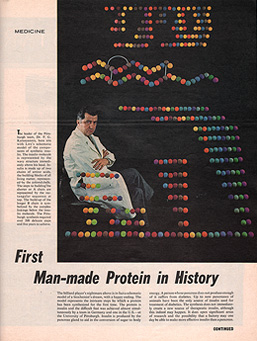
“First Man-made Protein in History,” LIFE, May 8, 1964
Courtesy © 1964 Time Inc. Reprinted with permission. All rights reserved. Image by Fritz Goro. ©Time Inc. Used with permission. All rights reserved.
In this illustration, the sequences of colored balls represent the steps in a complex chemical process for building insulin molecules. Although this achievement was important for research, the process was not feasible for commercial insulin production.
MEDICINE
The leader of the Pittsburgh team, Dr. P.G. Katsoyannis, here sits with LIFE’s schematic model of the components of synthetic insulin. The insulin molecule is represented by the wavy structure immediately above his head. Insulin is made up of two chains of amino acids, the building blocks of all living matter, represented by the colored balls. The steps to building the shorter or A chain are represented by the rectangular sequence at top. The build-up of the longer B chain is symbolized by the complex linkings below the insulin molecule. The Pittsburgh synthesis required over 200 delicate steps and five years to achieve.
First Man-made Protein in History
The billiard player’s nightmare above is in fact a schematic model of a biochemist’s dream, with a happy ending. The model represents the intricate steps by which a protein has been synthesized for the first time. The protein is insulin and the difficult feat was achieved almost simultaneously by a team in Germany and one in the U.S. – at the University of Pittsburgh. Insulin is produced by the pancreas gland to aid in the conversion of sugar to body energy. A person whose pancreas does not produce enough of it suffers from diabetes. Up to now pancreases of animals have been the only source of insulin used for treatment of diabetics. The synthesis does not immediately create a new source of therapeutic insulin, although this indeed may happen. It does open significant areas of research and the possibility that a factory may one day be able to make more effective insulin than a pancreas.
Continued
-
“Ribbon Diagram” of human growth hormone, 2013
Courtesy National Center of Biotechnology Information (NCBI)
Ribbon diagrams are a graphic tool that helps researchers to visualize protein structures such as growth hormone. Understanding the relationship between DNA, genes, and protein structures led to the birth of genetic technologies including recombinant DNA.
In 1988, the National Center for Biotechnology Information was established at the National Library of Medicine to provide a central source for genetic and molecular data, including the gene sequences and structures of the proteins essential to human health.
-
How did they make insulin from recombinant DNA?
Created by Link Studio
 All organisms, from microbes to humans, are governed by the genetic code embedded in their DNA. In the 1970s, scientists inserted a human gene into the genetic material of a common bacterium. This so-called “recombinant” microorganism could produce the protein encoded by the human gene.
All organisms, from microbes to humans, are governed by the genetic code embedded in their DNA. In the 1970s, scientists inserted a human gene into the genetic material of a common bacterium. This so-called “recombinant” microorganism could produce the protein encoded by the human gene.
Eager to explore the potential of this recombinant DNA technique, investors joined forces with research scientists to develop industrial applications. Two of the earliest products to reach the market were human insulin, used to treat diabetes, and human growth hormone, used in children with pituitary gland disorders.
Recombinant technology provided a commercially viable way to make proteins for medical use and gave rise to a new industry–dubbed “biotech.”
![]() All organisms, from microbes to humans, are governed by the genetic code embedded in their DNA. In the 1970s, scientists inserted a human gene into the genetic material of a common bacterium. This so-called “recombinant” microorganism could produce the protein encoded by the human gene.
All organisms, from microbes to humans, are governed by the genetic code embedded in their DNA. In the 1970s, scientists inserted a human gene into the genetic material of a common bacterium. This so-called “recombinant” microorganism could produce the protein encoded by the human gene.

